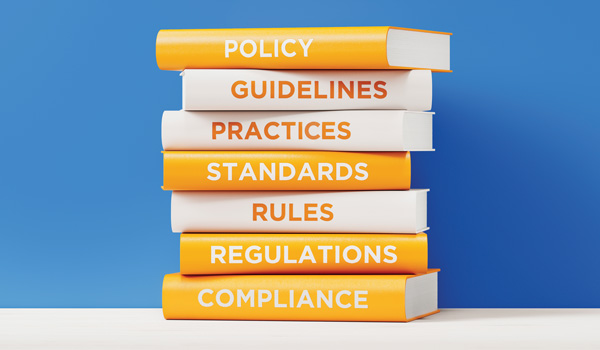Articles - Grid
-
 A New Era of Substance Use Health: Moving Beyond Outdated Models
The conversation around substance use is shifting from an illness-focused to a wellness-focused approach, calling for a new strategy in employee benefits. The author explores ways employers and plan sponsors can incorporate proactive approaches and essential resources into substance use health.
A New Era of Substance Use Health: Moving Beyond Outdated Models
The conversation around substance use is shifting from an illness-focused to a wellness-focused approach, calling for a new strategy in employee benefits. The author explores ways employers and plan sponsors can incorporate proactive approaches and essential resources into substance use health. -
 Legal Aspects of Trustee Expenses and Attendance at Educational Programs
Trustees need to stay informed about fund administration to perform their duties effectively. However, their broad discretion over educational expenses can lead to misuse. The authors examine the practical aspects of fiduciary responsibility to help trustees avoid these pitfalls.
Legal Aspects of Trustee Expenses and Attendance at Educational Programs
Trustees need to stay informed about fund administration to perform their duties effectively. However, their broad discretion over educational expenses can lead to misuse. The authors examine the practical aspects of fiduciary responsibility to help trustees avoid these pitfalls. -
 Empowering Modern Retirement Solutions for the 100-Year Life
By fostering inclusive workplaces where all generations can thrive, organizations can harness the economic and social benefits of a multigenerational workforce. The authors look beyond employment, encouraging a reimagining of retirement and preparation for the realities of longer lives.
Empowering Modern Retirement Solutions for the 100-Year Life
By fostering inclusive workplaces where all generations can thrive, organizations can harness the economic and social benefits of a multigenerational workforce. The authors look beyond employment, encouraging a reimagining of retirement and preparation for the realities of longer lives. -
 Embracing Data Operations in the Modern Fund Office
Multiemployer benefit funds have an increasing need for data operations as data becomes the basis for key decisions. Following the six key steps in this article can help fund offices get off on the right foot with their data operations.
Embracing Data Operations in the Modern Fund Office
Multiemployer benefit funds have an increasing need for data operations as data becomes the basis for key decisions. Following the six key steps in this article can help fund offices get off on the right foot with their data operations. -
 We Have “Gone OCIO.” Now What?
Hiring an outsourced chief investment officer (OCIO) is gaining popularity among employee benefit plans, but the trend is still in the early stages. This article explores many of the pros and cons of this decision and offers best practices that plan sponsors may want to consider to maximize their OCIO experience.
We Have “Gone OCIO.” Now What?
Hiring an outsourced chief investment officer (OCIO) is gaining popularity among employee benefit plans, but the trend is still in the early stages. This article explores many of the pros and cons of this decision and offers best practices that plan sponsors may want to consider to maximize their OCIO experience. -
 Mental Health Parity Compliance: Tips for NQTL Testing
Testing a health care plan’s nonquantitative treatment limitations (NQTLs) can be a confusing part of complying with mental health parity regulations. The authors describe the requirements and review common areas of noncompliance.
Mental Health Parity Compliance: Tips for NQTL Testing
Testing a health care plan’s nonquantitative treatment limitations (NQTLs) can be a confusing part of complying with mental health parity regulations. The authors describe the requirements and review common areas of noncompliance. -
 Old Tables, New Realities: The Changing Face of Pension Plan Mortality
Emerging strategies for determining pension plan member life expectancies may promise a more precise assessment of pension liabilities than traditional mortality tables. Multifactor modeling, which incorporates multiple variables that influence mortality, is one such approach.
Old Tables, New Realities: The Changing Face of Pension Plan Mortality
Emerging strategies for determining pension plan member life expectancies may promise a more precise assessment of pension liabilities than traditional mortality tables. Multifactor modeling, which incorporates multiple variables that influence mortality, is one such approach. -
 Aegis Risk Survey
In its eighteenth year, the 2024 Aegis Risk Medical Stop-Loss Premium Survey measures the ongoing expense and coverage of medical stop-loss amongst employer-sponsored, self-funded health plans.
Aegis Risk Survey
In its eighteenth year, the 2024 Aegis Risk Medical Stop-Loss Premium Survey measures the ongoing expense and coverage of medical stop-loss amongst employer-sponsored, self-funded health plans. -
 New Governing Council
New governing council offices and members announced!
New Governing Council
New governing council offices and members announced! -
 Symposium Highlights
Nashville, known for its eclectic and colorful atmosphere, hosted two and a half days of valuable education sessions and networking opportunities with professionals from across North America.
Symposium Highlights
Nashville, known for its eclectic and colorful atmosphere, hosted two and a half days of valuable education sessions and networking opportunities with professionals from across North America. -
 Protecting Your Defined Benefit Pension Plan From Inflation
High inflation may increase costs for defined benefit (DB) pension plans and potentially affect their funding status. The authors review how inflation impacts multiemployer and public DB plans and offer strategies for mitigating inflation risks.
Protecting Your Defined Benefit Pension Plan From Inflation
High inflation may increase costs for defined benefit (DB) pension plans and potentially affect their funding status. The authors review how inflation impacts multiemployer and public DB plans and offer strategies for mitigating inflation risks. -
 Adverse Benefit Determinations: The Process and the Pitfalls
Ensuring that claims procedures fulfill statutory requirements is an important part of minimizing legal challenges for employee benefit plans. In the second of two articles, the author describes the appeals process following an adverse benefit determination. The first article discussed the legal framework for claims procedures as well as timing and other requirements for benefit claim determinations.
Adverse Benefit Determinations: The Process and the Pitfalls
Ensuring that claims procedures fulfill statutory requirements is an important part of minimizing legal challenges for employee benefit plans. In the second of two articles, the author describes the appeals process following an adverse benefit determination. The first article discussed the legal framework for claims procedures as well as timing and other requirements for benefit claim determinations. -
 Is an Arbitration Provision Right for Your Plan?
Arbitrating employee benefit plan disputes can be a cheaper and more efficient alternative to litigating them in the courts, but arbitration provisions may not be a fit for every plan. Recent court decisions are among the factors to consider when evaluating whether to adopt, maintain, amend or remove an arbitration provision.
Is an Arbitration Provision Right for Your Plan?
Arbitrating employee benefit plan disputes can be a cheaper and more efficient alternative to litigating them in the courts, but arbitration provisions may not be a fit for every plan. Recent court decisions are among the factors to consider when evaluating whether to adopt, maintain, amend or remove an arbitration provision. -
 Take the “Hard” Out of Hardship Distributions With a Substantiation Policy
Recent legislation has relaxed the requirements for taking hardship distributions from defined contribution (DC) retirement plans, but some plan sponsors are hesitant to follow suit. Adopting a substantiation policy for these distributions can help minimize risks to the plan.
Take the “Hard” Out of Hardship Distributions With a Substantiation Policy
Recent legislation has relaxed the requirements for taking hardship distributions from defined contribution (DC) retirement plans, but some plan sponsors are hesitant to follow suit. Adopting a substantiation policy for these distributions can help minimize risks to the plan. -
-secure-2-0-gives-employers-a-new-option.jpg) Where Student Debt Meets the 401(k)—SECURE 2.0 Gives Employers a New Option
New guidance from the IRS provides some definition on the SECURE 2.0 provision that allows matching contributions on qualified student loan payments, expanding the potential tools employers have to help employees address their student debt burdens.
Where Student Debt Meets the 401(k)—SECURE 2.0 Gives Employers a New Option
New guidance from the IRS provides some definition on the SECURE 2.0 provision that allows matching contributions on qualified student loan payments, expanding the potential tools employers have to help employees address their student debt burdens. -
 Inclusive Benefits and Pensions to Attract and Retain Top Talent
Employers face talent acquisition and retention challenges, highlighting the need for benefit packages that meet diverse employee needs. The author explores the ongoing process organizations must navigate to adapt their plans, focusing on inclusivity and equity.
Inclusive Benefits and Pensions to Attract and Retain Top Talent
Employers face talent acquisition and retention challenges, highlighting the need for benefit packages that meet diverse employee needs. The author explores the ongoing process organizations must navigate to adapt their plans, focusing on inclusivity and equity. -
 Navigating Return to Work for Cancer Survivors: Supportive Strategies and Insights
Cancer survivors often face more significant employment challenges than those with other chronic illnesses as they transition back to work. The authors emphasize the need for targeted and sustained efforts to support cancer survivors’ reintegration into the workforce and maintain their quality of life.
Navigating Return to Work for Cancer Survivors: Supportive Strategies and Insights
Cancer survivors often face more significant employment challenges than those with other chronic illnesses as they transition back to work. The authors emphasize the need for targeted and sustained efforts to support cancer survivors’ reintegration into the workforce and maintain their quality of life. -
 Beyond Stocks: The Hidden Strengths of Fixed Income
Given increasingly volatile financial markets, it is more crucial than ever for investors to understand how to navigate complex waters. Within the context of investment portfolios, the author sheds light on various features of fixed income and its pivotal role, including offsetting risk alongside other asset classes.
Beyond Stocks: The Hidden Strengths of Fixed Income
Given increasingly volatile financial markets, it is more crucial than ever for investors to understand how to navigate complex waters. Within the context of investment portfolios, the author sheds light on various features of fixed income and its pivotal role, including offsetting risk alongside other asset classes. -
 Know the Rules: An Actuary’s Take on Complying With the Special Financial Assistance Program
Multiemployer pension plans receiving Special Financial Assistance (SFA) must comply with the program’s administrative requirements, which cover withdrawal liability assessments, investments, contributions and more.
Know the Rules: An Actuary’s Take on Complying With the Special Financial Assistance Program
Multiemployer pension plans receiving Special Financial Assistance (SFA) must comply with the program’s administrative requirements, which cover withdrawal liability assessments, investments, contributions and more. -
 Adverse Benefit Determinations: The Process and the Pitfalls
Ensuring that claims procedures fulfill statutory requirements is an important part of minimizing legal challenges for employee benefit plans. In the first article of two parts, the author describes the legal framework for claims procedures as well as timing and other requirements for claim determinations. A second article in the November/December issue will discuss the appeals process.
Adverse Benefit Determinations: The Process and the Pitfalls
Ensuring that claims procedures fulfill statutory requirements is an important part of minimizing legal challenges for employee benefit plans. In the first article of two parts, the author describes the legal framework for claims procedures as well as timing and other requirements for claim determinations. A second article in the November/December issue will discuss the appeals process.




